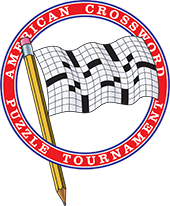Puzzlists: Way With Words
Source: Barnard MagazineDate: Fall 2008
Byline: Trudy Balch
Puzzlists: Way With Words
Japanese prime minister Taro Aso, who took office in late September, probably never saw it coming. The business career, yes. The rise in politics, yes. Maybe even the spot on Japan's 1976 Olympic shooting team. But his crossword puzzle possibilities?
"Fabulous," says veteran crossword constructor Elizabeth C. Gorski '76, whose work appears regularly in The New York Times and many other publications. "Now the clue for 'Taro' won't have to be that Hawaiian root all the time."
Gorski is but one of several Barnard graduates whose fascination with words cum visual creativity has led to her unusual career. Nancy Nicholson Joline '50, also a Times regular, recalls that she grew up in a family that loved word games. And when Ellen Ripstein '73 -- the eagle-eyed proofreader/tester for The New York Times crosswords, The Los Angeles Times Sunday crossword, and 2001 American Crossword Puzzle Tournament champion -- was growing up, "we got two Sunday papers delivered, so my mother and father could each have their own [puzzle]."
What they share is the serendipitous yet determined way they began. In the 1980s, both Gorski and Joline saw puzzles that made them think, "I could do better than this!" They sent their efforts to thenNew York Times crossword editor Eugene T. Maleska. Maleska didn't accept their early puzzles for the Times but did buy some for the Simon & Schuster puzzle books he also edited in those days. Today, Gorski and Joline are among the paper's most prolific living female Sunday puzzle constructors.
Ripstein, meanwhile, has carved out a unique puzzle do-ers niche. Her talent for vocabulary and recognizing clue patterns has made her a top solver -- as Patrick Creadon's documentary Wordplay will attest -- and attracted her proofing clients, as well as assignments researching questions for television game shows.
Where did it all start? Credit a New York World editor named Arthur Wynne, who in 1913 created a blank-in-the middle diamond-shaped grid with no black squares. By the mid-1920s, crosswords had taken on their now familiar square-grid pattern, devised by newly minted New York World crossword editor Margaret Petherbridge Farrar. Before long, the crowds descending on the New York Public Library to research clues were forced to limit their dictionary time to five minutes each, writes Coral Amende in The Crossword Obsession. In 1942, The New York Times created its own crossword section and promptly hired Farrar, who remained there until her retirement in 1969.
What sets constructors like Gorski and Joline apart? Original and interesting themes, lively vocabulary, and elegantly constructed grids, say Times crossword editor Will Shortz and Simon & Schuster editor John Samson. "It's an art form that operates under amazing constraints, like a sonnet or haiku," says crossword blogger Jim Horne (xwordinfo.com and xwordblog. com), now heading the Times's new crossword blog.
Besides blogs, what else is new in crossword construction? Two key developments are crossword software and the Internet: no longer must grids be drawn laboriously by hand, for example, while most information (and other constructors) can be found online in a snap. On the editorial side, Shortz and the influence of The New York Times have made crosswords "more like games," Joline says, with more pop culture references, puns, and tricky clues.
Shortz also put bylines on the Times's daily puzzles and raised fees. But as the chart on cruciverb.com shows, other publications don't pay quite as much. So it's not surprising that many freelance constructors design more lucrative custom puzzles or have multiple careers: Gorski also designs needlework and is a professional violist, while Joline has been a freelance writer/editor and worked in her husband's airport-consulting business. Still, both Shortz and Samson report that submissions keep rising, while Gorski has gotten a movie break -- her puzzles will appear in the forthcoming film All About Steve, starring Sandra Bullock as a crossword constructor who falls for a TV cameraman.
Another Barnard crossword star was Joy Lattman Wouk '40, who died on September 29. She began constructing puzzles in 1976, when New York City's alternate-side parking rules pushed her to spend several hours a week sitting in her car: she went through so many New York Times crosswords that she started creating her own. Soon she was a Times (and elsewhere) regular. Her grandson, Ed Wouk, remembers a joke his grandfather once played. After finishing one of her puzzles, he called out, "Joy, you'd better come here right away! It's all wrong!"

